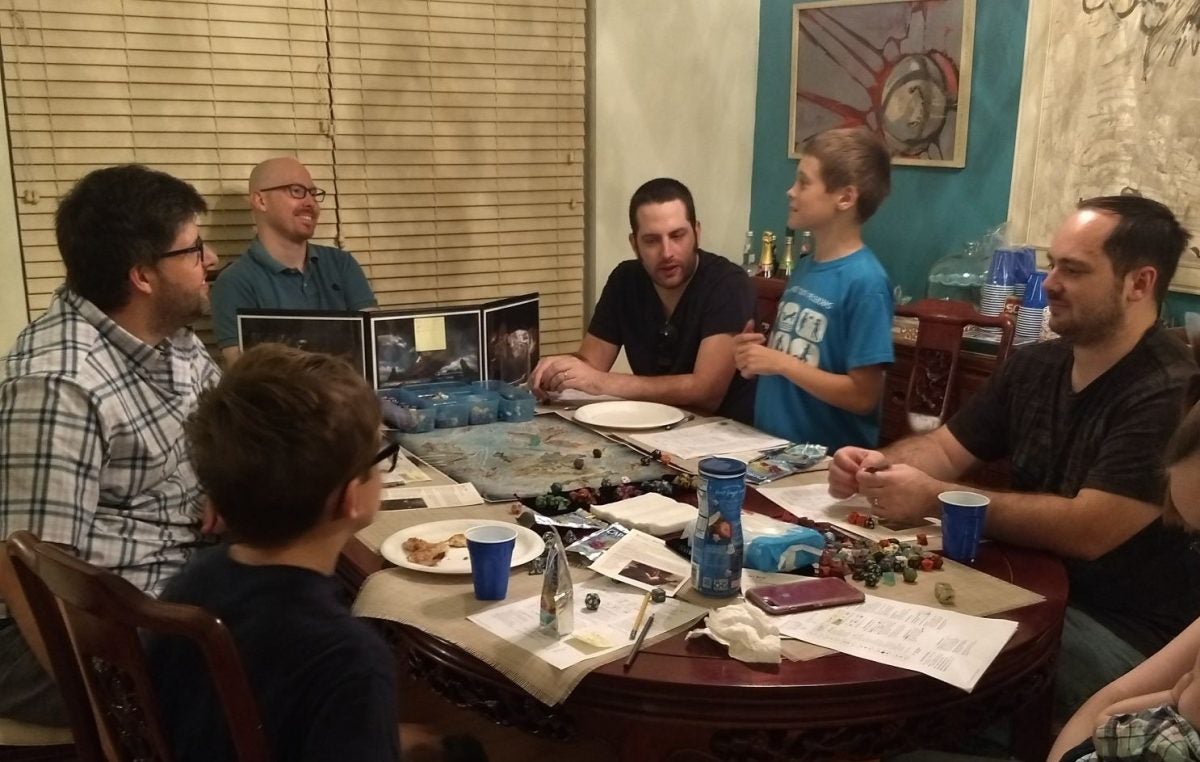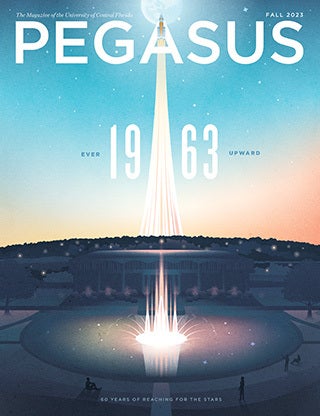It begins like a joke: A teacher, a professor and a federal prosecutor walk into a comic book shop. But this is no joke. We aren’t messing around. We’re dads, and we’re here to clobber some goblins.
Justin unscrolls the map. Tyler unboxes the dice. Scott makes notes on his character sheet, and I survey the shop’s selection of hardcore junk food, trying to decide whether the next three hours would be better served by an Oatmeal Crème Pie or a Yoo-hoo. Then, table set, we get into character and begin very seriously to pretend to be elves.
D&D, or Dungeons & Dragons, is a fantasy role-playing game, or RPG, in which players act out the parts of their characters in an ongoing, world-building saga that can span hours, days or even decades. Think The Lord of the Rings, but you’re the hobbits. Think improv with elves, plus, weirdly, a lot of math. D&D is not a board game, though there are plenty of dice, and it’s not a card game, though some tabletop RPGs make use of playing cards.
And while many RPGs have moved online, providing the opportunity to interact with players all over the world, shows like Stranger Things and HarmonQuest have repopularized D&D’s 1974 origin of friends sitting face-to-face around a table with hand-drawn maps and notebooks detailing hit points, armor class and just how many arrows that one ranger has left in her quiver.
Step into any comic or gaming store across America, and you’ll see the cultural shift in the guise of sizeable sections dedicated to role-playing.
Step into any comic or gaming store across America, and you’ll see the cultural shift in the guise of sizeable sections dedicated to role-playing. From 2016 to 2017, D&D sales increased by 40 percent, and with nerd culture morphing quickly into pop culture (see: the entire Marvel movie franchise), expect more of the same from 2018 to 2019.
Boy Meets World alumni Will Friedle and Rider Strong proudly play, Friedle hosting a game Strong calls “lively, creative, and amazing.” Strong even co-wrote and co-directed a short film on the subject with his brother, Shiloh Strong. The Dungeon Master, which I was lucky enough to get a sneak peek at, is headed to a streaming platform near you, and it is delightful.
Also, it shouldn’t have to be said, but I’ll say it. D&D: It’s not just for dudes. According to Vivian Kane’s article “How Women Are Driving the Dungeons & Dragons Renaissance,” female participation in D&D has doubled since 2012. Women now account for 40 percent of the D&D marketplace, thanks in large part to the company hiring numerous women to revamp the product’s fifth edition, its most inclusive yet. As author Brendan Stephens puts it, the fifth edition is “the rule set that puts the most emphasis on storytelling and running a game that works best for your play group.”
My own failed search early on for a D&D play group dates back to middle school. At sleepovers, some guys and I would stay up all night designing our characters, but the sun would rise before we had time to play. The next weekend, rather than play with the characters we had, we’d assemble new ones. This was fun but, ultimately, unfulfilling. If character is revealed through action, and our characters were never given the chance to act, then what we’d made weren’t characters so much as shells, sketches without motivation or aim. They lived in our imaginations, until they didn’t.
Later, a boy from California moved to my Atlanta high school. He claimed to be a world-class dungeon master (the player who leads a campaign), and maybe in his mind he was. But he was a cruel master. No sooner would we create characters than he’d kill them, mercilessly and with no regard for narrative. If RPGs were movies, his were Quentin Tarantino films, revenge fantasies as recompense for some unspoken crime we never meant to commit.
Despite this abuse, I might have carried on had a family member not discovered my D&D book and miniatures and reported me to the authorities of the Southern Baptist church in which I was raised. Said book and miniatures were deemed satanic, as was my lone Green Day album, Dookie, and in a fog of shame I turned my back on gaming for years.
The inclination, the pull toward the fantastic, has always been there, imprinted onto my childhood narrative DNA.
Still, the inclination, the pull toward the fantastic, has always been there, imprinted onto my childhood narrative DNA. I was raised on comics and Jane Yolen’s Pit Dragon Chronicles. The NeverEnding Story, Labyrinth and The Wizard of Oz were my favorite movies growing up. And as an adult, having traded my early church upbringing for a more inclusive, progressive faith, it makes sense that, at some point, the siren song of fantasy would drown out the lousy D&D experiences and shame of my teenage years and return me to a comic shop where, for three hours a week I play make-believe with men in their 20s and 30s.
I’m not alone in arriving late to the game. Jennie Jarvis, author of Crafting the Character Arc, was intrigued as a child, but she avoided the game due to the stigma that was attached to it, the “‘only nerd virgins play D&D’ jokes out there.” Then, as she puts it, “I married a very loud and proud geek, and I didn’t need to hide my inner desire to learn more about it.” She now plays with her husband. “It can be a fun, narrative-based way of exploring your creativity in a team-based environment.”
And that’s just it. At the end of the day, the game is only as rewarding as the people with whom you play. D&D, like any improvised storytelling form, compels vulnerability. Play with the wrong people, and you might feel silly. Play with the right people, and you’ll deepen your friendships. I mean, if you can’t drink Yoo-hoo and pretend to slay giant woodland spiders with your friends, who can you drink Yoo-hoo and pretend to slay giant woodland spiders with?
David James Poissant is an associate professor at the University of Central Florida where he teaches in the MFA program in creative writing. He can be reached at David.Poissant@ucf.edu.





